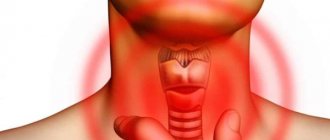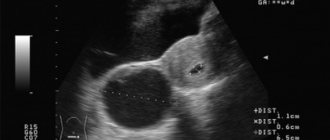Can the temperature rise during menopause?
Menopause is one of the difficult life stages for a woman. It is characterized by a large number of unpleasant symptoms, one of which is an increase in body temperature. The symptom is common and often interferes with everyday life. In healthy people, the temperature can reach 37 degrees, which is a slightly elevated figure. During the day, the temperature during menopause can change several times, sometimes falling, sometimes rising. In addition to this symptom, drowsiness, a feeling of weakness and fatigue are added.
Increased pressure
The cardiovascular system also undergoes changes during menopause. Vessels and capillaries lose their elasticity and become brittle. The concentration of cholesterol increases, cholesterol plaques form, and because of this, the passages become even narrower.
Thick blood has difficulty moving through the system, causing increased pressure. The heart has to work hard to pump blood through the body. A sharp increase in blood pressure leads to an increase in temperature.
The tendency of women during menopause to have nervous breakdowns also serves as a disservice, increasing blood pressure and temperature. If this continues for a long time, then there is a high probability of the onset of a hypertensive crisis.
Causes
Menopause is considered a transitional stage of life, which is accompanied by a restructuring of the functioning of certain systems in the body. One sign of change may be a jump in temperature, regardless of other symptoms. Changes in indicators can be consistent or chaotic. During the day, a woman during menopause can have a body temperature ranging from 36.5 to 37.5 degrees.
Most often, the temperature rises during hot flashes, worsening overall health.
Low body temperature in women is observed in the morning, and in the evening it increases. Normally, elevated temperature in women occurs due to several different factors: fatigue during the working day, painful condition, lack of sleep, etc. Such signs indicate the natural course of the climatic period. However, if you observe an increase in temperature to 38 degrees and other unpleasant sensations, it is recommended to consult a doctor to exclude the possible development of inflammation or pathology in the body.
Menopause related
There are several reasons why the temperature may rise during menopause:
- tide The most common cause is characterized by a malfunction of the pituitary gland, as a result of which the brain believes that the body is hot. An increase in temperature during hot flashes is accompanied by shortness of breath and redness of the face. The woman may then feel cold, followed by sweat. Often the temperature reaches no more than 37.5. Additionally, headaches and nausea may occur;
- pressure. There is a lack of the required amount of estrogen, which leads to thinning of the walls in the blood vessels, cholesterol accumulates and elasticity is lost. The blood acquires a viscous consistency. This affects blood pressure, which leads to an increase in temperature;
- menstruation. With each long pause between cycles, the body tolerates it more and more heavily, which affects the high temperature;
- pathology. Characterized by weakened immunity, which is why infections enter the body.
If you observe a regular increase in body temperature, which is accompanied by other painful symptoms, you should consult a doctor for advice.
Pathological
A high temperature during menopause may also indicate the development of a pathological process in the body, since at this moment the immune system weakens, which allows bacteria to develop favorably.
Baths and compresses
A hot bath can cause negative consequences, including death. You should not take a bath whose temperature exceeds 37°C - this is the optimal temperature to warm the body.
At low temperatures, you can use warm dry compresses or their alcohol version. The main thing is not to burn the skin - napkins or towels should not be too hot, and it is better to dilute alcohol with water.
Basal temperature
The performance of the reproductive system is significantly reduced due to a lack of the required amount of hormones. This affects the change in basal temperature. Changes are characterized by minor but permanent effects. Often, basal temperature indicators vary from 36.9º to 37.5º.
The indicator depends solely on the individual characteristics of the organism.
To determine basal temperature, you need a mercury or electronic thermometer. It must be measured after 6-9 hours of sleep before the body finally wakes up. The examination is carried out without getting out of bed. You can find out your basal temperature in a simple way:
- The thermometer is inserted into the anus or vagina a few cm inward.
- You must lie still for 5 minutes to prevent damage to the thermometer and injury.
- After 5 minutes, you need to carefully take out the thermometer and look at the readings on it.
Before measurement, it is not recommended to have sex, exercise, or drink alcohol.
Use a measurement diary, thanks to which you can monitor changes in indicators, and, if necessary, provide it to your doctor to establish a diagnosis and prescribe treatment.
How to measure correctly
The temperature indicator is subject to third-party influences, so to obtain reliable data it is necessary to strictly adhere to the procedure.
There are these rules:
- It is recommended to take the measurement in the morning immediately after waking up and before getting out of bed.
- It is advisable to carry out the procedure at the same time.
- Preference should be given to measuring in the vagina rather than under the tongue.
- It is necessary to take into account all the subtleties of the procedure. The thermometer can be anything - mercury or electronic. But it is important to use the same thermometer every day. The measurement is carried out in a lying position. The thermometer is inserted no more than 2 cm and held motionless for no less than 6 minutes.
- We must not forget about restrictions. 6 hours before the measurement you should not drink alcohol, eat, take contraceptives or have sexual contact.
The indicators are recorded, and when measurements are taken for 21 days, a graph is drawn up. If a woman is still menstruating, then in one menstrual cycle.
Diagnostics
Considering that high temperature during menopause is often a sign of various diseases, it is important to consult a general practitioner or family doctor if symptoms develop. It is very important that the attending physician is able to differentiate the elevated temperature and exclude pathologies. Otherwise, there is an increased risk of developing a pathological or inflammatory process in the body. Diagnosis is carried out in several ways:
- blood test for inhibin A and B levels;
- general blood test and anti-Mullerian level, showing ovarian reserve;
- test for the presence of follicle-stimulating enzyme. Otherwise it is called a menopause test. It is freely available in pharmacies. If the result is more accurate, it is recommended to take a laboratory test;
- determination of prolactin and cortisol levels. If the indicator is high, elevated temperature indicates stress.
Bronchitis
Sometimes a low temperature can signal a more serious illness. For example, when a person develops weakness and a dry cough, but the thermometer mark creeps down rather than up, this may be the first sign of bronchitis.
However, this condition, which is not similar to a common cold, confuses many, and people do not begin to receive treatment in time. As a result, after 3-4 days, bronchitis, as they say, develops in full force. And dealing with it is no longer so easy.
Therefore, you need to be careful about your body and visit a doctor in a timely manner. After all, in order to identify incipient bronchitis, a doctor only needs to listen to the patient’s lungs and study his general blood test.
Treatment in this case will be much faster and more effective. If we are talking about viral bronchitis, then the specialist will have time to prescribe antiviral drugs to the person. As you know, it is best to take them at the first signs of malaise.
And for bacterial bronchitis, you can get by with a short course of antibacterial drugs that can easily cope with harmful microorganisms. And a person will not have to spend a lot of time and effort to get his health in order.
Treatment
Since an increase in body temperature is a natural phenomenon, the problem can be stabilized by changing thermoregulation processes. Effective methods are:
- the use of drugs that affect hormonal levels;
- use of phytoestrogens;
- ethnoscience;
- stabilization due to corrected diet, day and sleep.
Before you begin to eliminate this symptom, you need to consult a specialist and make a full diagnosis.
Drugs
A drug course of treatment is prescribed if menopause occurs in a complicated form. Hormone replacement therapy medications are often used because they can control high body temperatures without disrupting other systems.
The most popular and effective drugs are: Klimonorm, Femoston, Klimadinon, Angelique, Klimara. Use only under the supervision of a physician.
Folk remedies
If you do not want or need to take hormone replacement therapy medications, it is recommended to take phytoestrogens - a natural substitute that helps produce the missing estrogen. Its action can eliminate the unpleasant symptoms of menopause, in particular, normalize body temperature during hot flashes. Also, as an addition to the main course of treatment, experts recommend using folk remedies:
- wheat. Its embryos contain natural phytoestrogen and vitamins necessary during menopause. One spoon a day can significantly improve the functioning of the immune system and reduce the unpleasant manifestations of the climatic period;
- Red clover. Refers to medicinal plants. It is recommended to drink every day to get rid of unpleasant symptoms and improve the defense of the immune system;
- linen. The seeds of this plant or the oil from it can help produce the missing amount of estrogen in the blood and significantly reduce the symptoms of the climatic period.
The use of folk remedies only alleviates the condition, but does not eliminate the cause. They are prescribed as an additional course or if the patient is not indicated for hormone replacement therapy.
Features of therapy
A decrease or increase in BT is the reaction of the female body to the manifestations of menopausal syndrome. The indicators are directly affected by hot flashes, insomnia, hypertensive crises, and depressed morale. Stabilizing basal temperature during the menopausal period is possible only with proven therapeutic methods, which can only be prescribed by the attending physician.
In general practice, the patient is first asked to undergo an examination to find out the cause of the jumps in basal temperature values. If a provoking factor is identified, the doctor prescribes treatment. It could be:
- taking hormonal medications under constant monitoring of blood clotting indicators, the health of the mammary glands and reproductive organs;
- therapy with drugs based on phytoestrogens;
- strengthening and restoring the body with the help of traditional medicine.
Women of menopausal age are advised to lead a healthy lifestyle, give up smoking and alcohol, exercise moderately and undergo preventive examinations in a timely manner, then the manifestations of menopause will be milder and will not harm the body.
Who needs to build charts for a long time
It has long been recommended to measure basal temperature for women who are at risk for health problems during menopause:
- there are bleedings for unknown reasons;
- close relatives had malignant tumors of the mammary glands or organs of the reproductive system;
- there have been difficult births, miscarriages, abortions or other surgical operations on the uterus;
- the lady did not give birth or become pregnant;
- there is chronic inflammation of the genital organs.
If the indicator does not stay at the same level, and its values change frequently, then the woman should immediately consult a doctor. Such control makes it possible to detect diseases in the early stages.
Sources:
https://promesyachnye.ru/bazalnaya-temperatura-pri-klimakse/ https://topginekolog.ru/klimaks/bazalnaya-temperatura https://stopclimax.ru/azbuka/temperatura











